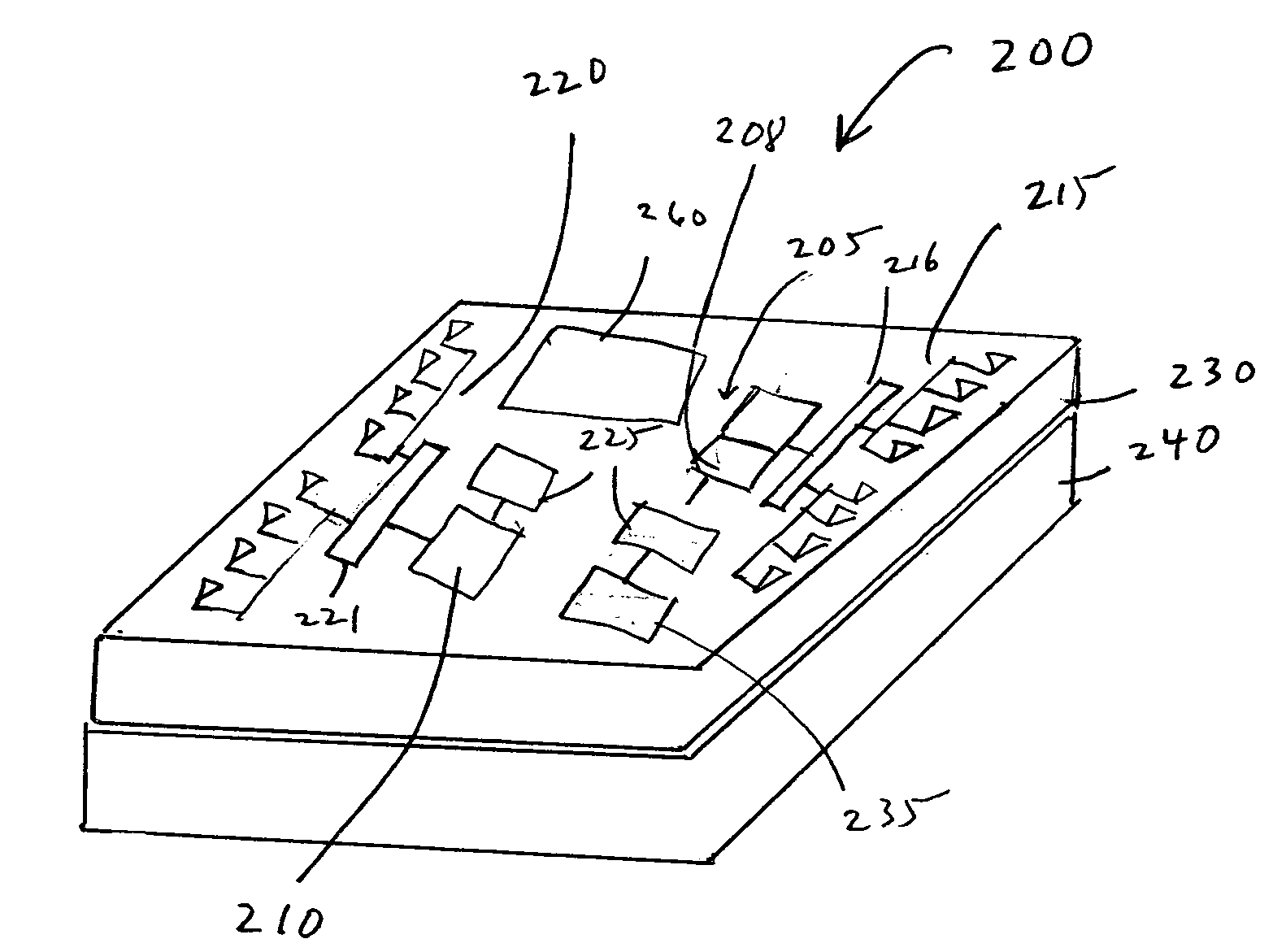Single chip radio with integrated antenna
a single chip radio and antenna technology, applied in the field of single chip radios, can solve the problems of high assembly cost, increased power consumption, degraded reliability, etc., and achieve the effects of reducing the impact of chip area, reducing interaction, and reducing the loss associated
- Summary
- Abstract
- Description
- Claims
- Application Information
AI Technical Summary
Benefits of technology
Problems solved by technology
Method used
Image
Examples
examples
[0095] It should be understood that the examples and embodiments described herein are for illustrative purposes only and that various modifications or changes in light thereof will be suggested to persons skilled in the art and are to be included within the spirit and purview of this application. The invention can take other specific forms without departing from the spirit or essential attributes thereof
[0096]FIG. 4 shows the measured antenna gain (Ga) vs. zigzag antenna axial length on a 20 ohm-cm Si substrate having a 3-μm oxide layer thereon. The separation distance between transmit and receive antennas was 1 meter. As shown by the measurements, the 3-mm zigzag antenna has about 3 and 9 dB higher gain than 2 and 1-mm antennas, respectively, while having only about 1 dB lower gain than the 4-mm antenna. Thus, the 3-mm zigzag dipole antenna is a preferred choice for μNode applications as it fits the μNode size requirement.
[0097]FIG. 5 shows the measured antenna gain vs. substrate...
PUM
| Property | Measurement | Unit |
|---|---|---|
| Length | aaaaa | aaaaa |
| Thickness | aaaaa | aaaaa |
| Thickness | aaaaa | aaaaa |
Abstract
Description
Claims
Application Information
 Login to View More
Login to View More - R&D
- Intellectual Property
- Life Sciences
- Materials
- Tech Scout
- Unparalleled Data Quality
- Higher Quality Content
- 60% Fewer Hallucinations
Browse by: Latest US Patents, China's latest patents, Technical Efficacy Thesaurus, Application Domain, Technology Topic, Popular Technical Reports.
© 2025 PatSnap. All rights reserved.Legal|Privacy policy|Modern Slavery Act Transparency Statement|Sitemap|About US| Contact US: help@patsnap.com



